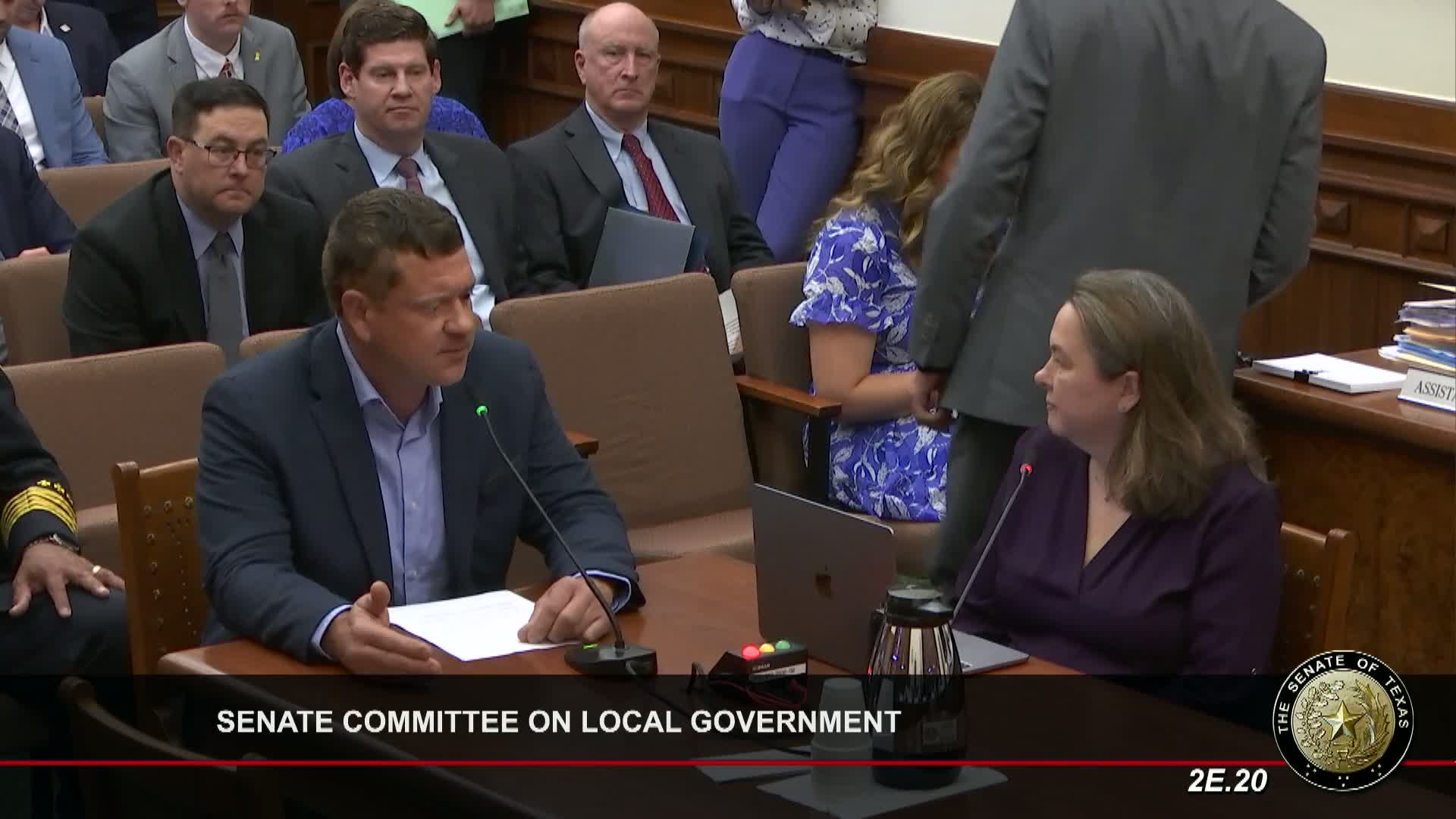Committee hears contested bill to allow single‑stair apartment buildings under local opt‑in
April 24, 2025 | Committee on Local Government, Senate, Legislative, Texas
This article was created by AI summarizing key points discussed. AI makes mistakes, so for full details and context, please refer to the video of the full meeting. Please report any errors so we can fix them. Report an error »

Senator Johnson presented a committee substitute to Senate Bill 2835 that would let cities opt to allow ‘‘single‑stair’’ multifamily buildings (buildings that rely on a single internal stair rather than two separate stairwells required under many editions of the International Building Code) when they meet specified safety measures.
Senator Johnson and multiple proponents argued that modern materials, compartmentation, and sprinkler technology make single‑stair designs safe and that such buildings permit more efficient use of land and produce more pleasant unit layouts than double‑loaded corridor designs. Witnesses included Charles Miller (Texas 2036), Chris Ganna (architect and chair of AIA’s Housing Advocacy Committee), and others who highlighted that unit egress distances in the designs are shorter (witnesses cited a 20‑foot maximum distance from unit door to exit in single‑stair designs) and that NFPA and other research does not show increased fire fatality risk in comparable structures.
Kimberly Miller, representing the Texas chapter of the American Planning Association, registered a qualified opposition: she noted the bill bypasses the traditional code‑development processes of the International Code Council and NFPA and questioned whether smaller jurisdictions would consistently have adequate fire‑safety personnel and equipment to oversee the new building typologies. Proponents said the committee substitute is permissive (not a statewide mandate) and that it contains technical mitigation measures for fire‑rating, travel distances, and sprinkler requirements; opponents urged further study and local readiness assessments.
After public testimony the committee closed the record and left the committee substitute pending subject to call of the chair.
Senator Johnson and multiple proponents argued that modern materials, compartmentation, and sprinkler technology make single‑stair designs safe and that such buildings permit more efficient use of land and produce more pleasant unit layouts than double‑loaded corridor designs. Witnesses included Charles Miller (Texas 2036), Chris Ganna (architect and chair of AIA’s Housing Advocacy Committee), and others who highlighted that unit egress distances in the designs are shorter (witnesses cited a 20‑foot maximum distance from unit door to exit in single‑stair designs) and that NFPA and other research does not show increased fire fatality risk in comparable structures.
Kimberly Miller, representing the Texas chapter of the American Planning Association, registered a qualified opposition: she noted the bill bypasses the traditional code‑development processes of the International Code Council and NFPA and questioned whether smaller jurisdictions would consistently have adequate fire‑safety personnel and equipment to oversee the new building typologies. Proponents said the committee substitute is permissive (not a statewide mandate) and that it contains technical mitigation measures for fire‑rating, travel distances, and sprinkler requirements; opponents urged further study and local readiness assessments.
After public testimony the committee closed the record and left the committee substitute pending subject to call of the chair.
View full meeting
This article is based on a recent meeting—watch the full video and explore the complete transcript for deeper insights into the discussion.
View full meeting
